From the June 2023 issue of Apollo. Preview and subscribe here.
A century ago, during the Weimar Republic, Frankfurt prided itself on modernity. It boasted a massive modernist social housing programme, publicised in a magazine, New Frankfurt. After 1945, the city’s financial district became Europe’s sky-scraper centre. But in the last decade, a both newer and older Frankfurt has been built on top of the modernist city. Spiky gables, half-timbering and winding streets have emerged in the shadow of the glass towers. This is celebrated across social media in before and after juxtapositions, often posted by Americans who wouldn’t be able to place Frankfurt on a map, with the slogan: ‘Reject Modernity/Embrace Tradition’. Other German cities have been doing the same. What is the motivation between this obsession with rebuilding European cities to look like the 20th century never happened?
The Anglo-Polish writer Marek Kohn tries to provide some answers, in his new book The Stories Old Towns Tell (Yale University Press). Its title is a little deceptive – of the dozen or so cities in Central Europe that Kohn describes, only a handful escaped substantial destruction in the Second World War. His tale reveals how these spaces emerge out of the unfinished business of the war, and the profound ethnic and spatial effects it had in a zone roughly between Bavaria and Lithuania. Almost everywhere he writes about has either been reconstructed after enormous wartime destruction (Warsaw, Wurzburg, Gdansk, Wroclaw) or lost the original population that once lived there (Poles in Vilnius, Germans in Gdansk and Wroclaw, Jews everywhere). Old towns that have a genuine continuity of built fabric or nationality – Florence, say, or York – are absent, in favour of a series of pitched battles of historical memory, which Kohn skilfully pulls out from under the Disneyland facades.
This is a useful way to look at old towns, largely because at the heart of the zone is the space which traditionalists have since the 1950s considered to be the road not taken for the European city: Warsaw. The rebuilding of the Polish capital’s old town flew in the face of both the modernist and the neoclassical planning ideas of the period. There were two ‘best practices’ as cities came to be rebuilt across Europe after 1945. One was Beaux-Arts planning – based on streets, stripped classical architecture, space, order and grandiosity; this resulted in rebuilt Le Havre, Plymouth and Stalingrad. The other was modernism, based on separation of pedestrians and traffic, blocks in green space, and architectural abstraction; this can be seen in Coventry, Rotterdam and Cologne. Warsaw’s architects were trained in these ideas, yet they chose to reject them in favour of tradition.
The Polish capital was a special case solely because of the incomprehensible barbarity with which the city was treated by the Nazis. A large swathe of the city centre was turned into a walled ghetto, whose Jewish population were then sent to camps to be exterminated; a courageous Jewish uprising in 1943 was suppressed by the Wehrmacht and the SS, and the area that made up the ghetto was razed to the ground. A year later, as the Red Army neared the city, the Polish resistance rose against the Nazis, only to be crushed in turn; the Soviets watched from the banks of the river Vistula as the Germans numbered the city’s buildings and methodically smashed them up, one by one. Until it was eventually liberated in 1945, Warsaw was a barely inhabited mass grave, not a city. Although many cities had been destroyed in the war, nowhere had faced urbicide on this scale, and the decision to rebuild exactly can be understood only on these grounds.
The reconstruction was planned and guided by a disparate group of modernists and classicists, veterans of the Home Army and card-carrying Communists, Polish nationalists and Jews, who were united by little other than a passionately shared belief that the city needed to rise, complete, from the ashes, as a gesture of defiance against the Nazi attempt to erase it from the face of the earth. But Kohn finds that this was not in fact the first proposal for a new old town in Warsaw. When they first took the city in 1939, the Germans commissioned a plan that envisaged shrinking Warsaw into a ‘German’ city based around that old town, which allegedly exemplified the ‘medieval German settler spirit’ – even though the settlers in question had been invited by Polish lords 600 years earlier.
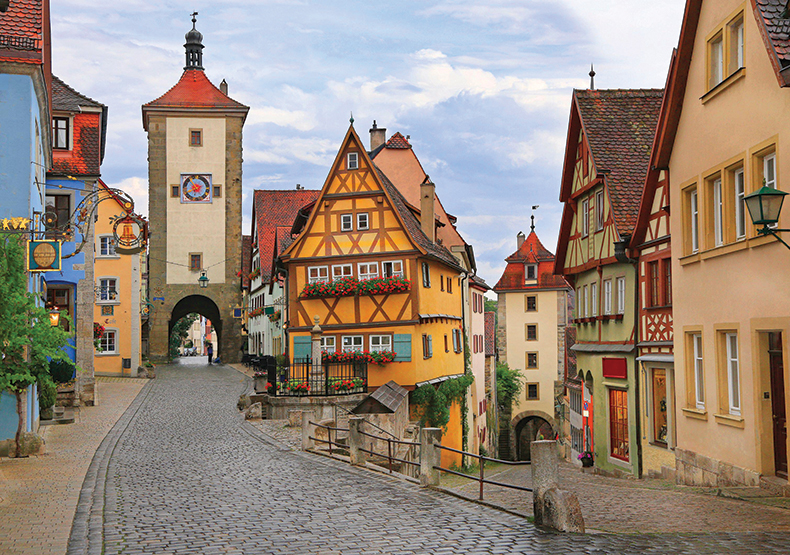
Rothenburg ob der Tauber in Germany is a rare pre-war survival. Photo: Vlad Ghiea/Alamy Stock Photo
It is still moving to read about how Warsaw’s rebuilders created a magnificent townscape out of a swathe of rubble. At one point, one of the planners found what looked like yet another corpse, and as they went to investigate, they found it was the statue of King Zygmunt III, which once stood atop a column at the heart of the old town. There is also modernism there, if you know where to look. The old town is a great example of 1950s applied art in mosaic, sgraffito and plaster, sometimes realistic, sometimes abstract. The old town is also effectively a council estate: the new buildings which look like 16th-century townhouses are actually social housing from the 1950s. In terms of ethics and symbolism, Warsaw old town can be seen as a very specific, one-off project – but its popularity meant that the Polish government tried to repeat the trick in the German cities it took over after 1945.
The reconstruction that took place in Gdansk and Wroclaw was historically creative. First, both cities were also ransacked for bricks to rebuild Warsaw; when the capital was complete, these two recently German but originally Polish cities were reconstructed in turn, with the choices of buildings to rebuild dictated by their plausible Polishness. Wroclaw’s very oldest buildings became, Kohn writes, ‘the Polish birth certificate of the city’, though they are in a wholly international Central European gothic style. Later buildings were remodelled or replaced. Meanwhile, if in Warsaw each block of flats-cum-townhouses was entered individually as discrete units, in Gdansk, the more hurried reconstruction meant that continuous blocks of flats were hidden behind what looked streets of distinct buildings. Residents identified where they lived with the courtyard stairwells, not the opulent but irrelevant facades.
The moral case for reconstruction simply did not apply in Germany. The RAF was not interested in wiping Dresden or Frankfurt off the map in order to crush German culture, and the racial science that saw Warsaw claimed as a ‘German city’ because it had gothic churches and gables was wholly missing: they were destroyed simply because of Arthur Harris’s (unproven, and murderous) theories that saturation bombing would destroy the German population’s morale. Yet after 1945, an architectural profession that was reshaped by Nazism to reject modernism and embrace tradition was unable to opt for the modernism favoured then in Britain, France or the Netherlands – at least, not until the experiments of the 1960s in cities such as Cologne, Hanover and East Berlin. What resulted, in destroyed cities such as Wurzburg, which Kohn profiles in The Stories Old Towns Tell, was the building of vaguely historicist buildings on slightly widened versions of the old streets, thus embracing neither modernity or tradition. This neither-here-nor-there condition, common in Germany, has caused a certain ongoing angst.
Kohn’s other German example is Rothenburg ob der Tauber, which became the model of the town in Disney’s Pinocchio, and mostly survived the saturation bombing of German cities. It was also regarded by the Nazis as the ‘Germanest’ (deutschte) of towns’, and, writes Kohn, ‘the feeling was mutual’, with the town voting overwhelmingly for the Nazis in the last free elections in the Weimar Republic. In the post-war era it was a rare exemplar of an almost untouched German town, so the relatively small quantities of buildings destroyed in the war have themselves been stripped back to reveal their half-timbered construction, making them look older than they are. Kohn records the presence of many Nazis in 20th-century Germany’s conservation movements. Among them was the artist and activist Ernst Unbehauen, who once made anti-Semitic ‘warning’ plaques that were placed at the gates to Rothenburg old town warning Jews not to enter, but by the mid 1960s had become the town’s conservator. Later, in Hanover or Frankfurt, it has been 68ers who have spearheaded reconstruction, which Kohn regards as showing the possible progressiveness of this model of rebuilding but equally plausibly exhibits how the counter-culture’s suspicion of technology and modernity eventually brought them round to the positions of the old right.
But where the liberal-left reconstructors have distinguished themselves is in trying, in both Germany and Poland, to draw attention to the former Jewish presence in these old towns, which was ignored at best or systematically erased at worst, even after 1945. In Germany especially, Stolpersteine, or ‘stumbling stones’, have been placed in the cobbles so as to record the former presence of Jewish residents. But with or without Stolpersteine, the reconstruction of cities to erase ‘placeless’, ‘rootless’, ‘international’ modern architecture has an uncomfortable resonance.
Modernism broke with tradition aesthetically, but the idea of building in a way that speaks of the values of your own period is one that has very deep roots; without it, once radically new styles beloved of reconstructors such as the Renaissance, the baroque and art nouveau would never have happened. As the Leipzig-born art historian Nikolaus Pevsner, who worked in Dresden in the late 1920s, pointed out, modernism has its roots in Arts and Crafts, and in a dispute about architectural authenticity. At the height of the 19th century, two wings of the Gothic Revival faced off, with Viollet-le-Duc advocating the remaking of medieval churches into Victorian fantasies (the recently burned spire of Notre Dame was his), and William Morris calling for maintenance rather than reconstruction, so that the real workmanship of the medieval masons could be seen. If Morris won the architectural history departments and the conservationists, Viollet-le-Duc won the tourist boards. The mutual antipathy runs deep. Kohn reports an architect in Rothenburg encountering a tourist who told him and a friend to move out of his way because he wanted to ‘take a picture of an old house, not two young guys’. He snapped back that together, they were much older than the building in question. The tourist replied: ‘Go away! I don’t care!’ The old town impulse is about seamlessness – the creation of entire complete environments in which you can lose yourself in dreams of the past. London or Berlin may have plenty of old buildings, but they are always interrupted by something new. This is much closer to how cities have been built over time, but it wakes you up from the dream.
As with any town or any piece of architecture, not every old new town is of equal quality. It is perfectly possible to find Warsaw old town charming and moving, and to find Frankfurt old town a terrible failure of imagination – much as it’s possible to enjoy the post-war modernism of Coventry and not the post-war modernism of Plymouth. Today, the reconstructed cities of the 1950s and ’60s are in much more urgent need of advocates, especially as they so often face demolition for the sake of pseudo-history. But perhaps each of these methods of rebuilding speak of their own time. Frankfurt’s brutalist Technisches Rathaus, demolished for the latest ‘old town’, was bulky and aggressive, but its multiple levels and cybernetic style spoke loudly and proudly about the 1970s, and a country willing to shake off an appalling past and build the future. The new old town speaks just as well about how European cities in the 2020s are increasingly strangled by tourism, sentimentality and nationalism.
From the June 2023 issue of Apollo. Preview and subscribe here.
Unlimited access from just $16 every 3 months
Subscribe to get unlimited and exclusive access to the top art stories, interviews and exhibition reviews.

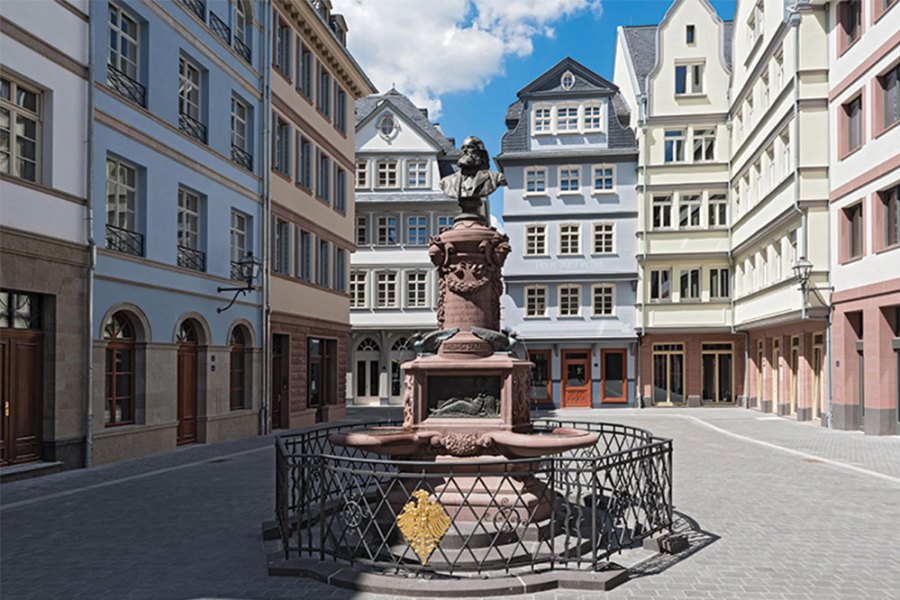
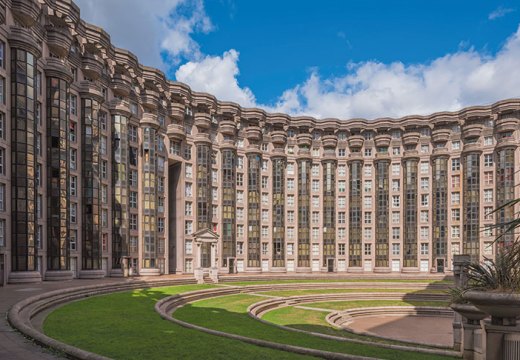
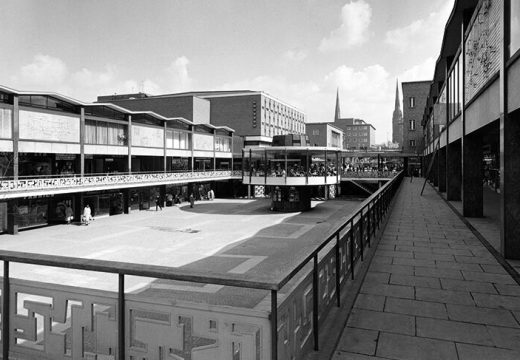
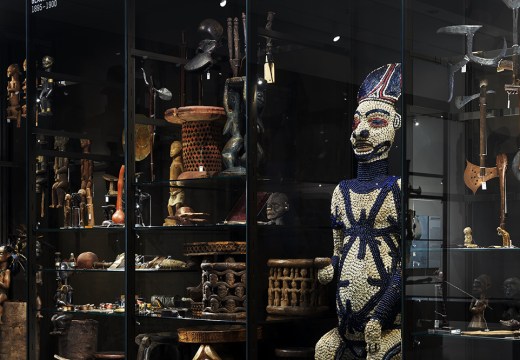









![Masterpiece [Re]discovery 2022. Photo: Ben Fisher Photography, courtesy of Masterpiece London](http://www.apollo-magazine.com/wp-content/uploads/2022/07/MPL2022_4263.jpg)
Why are fathers so absent from art history?